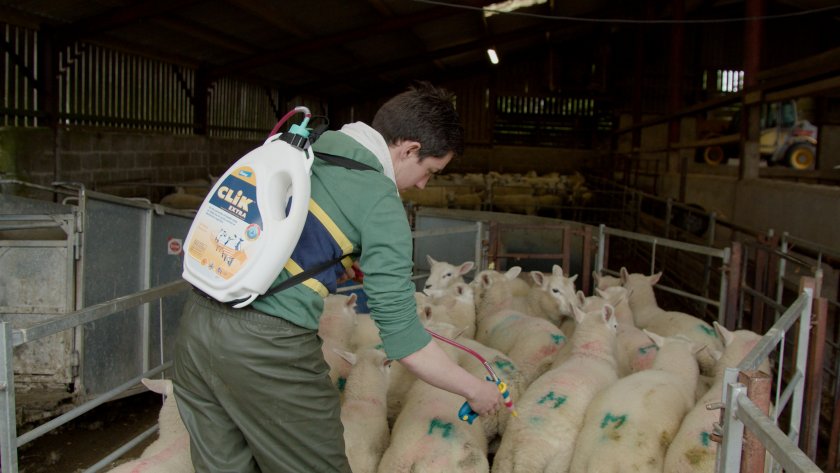
A new blowfly watch service is now available for farmers as part of efforts to help the sheep sector prevent costly strike cases.
The service has been relaunched to provide sheep farmers with the latest information on the blowfly risk in their area.
With mortalities due to blowfly strike costing farmers £209 per lamb and £184 per breeding ewe, preventing cases is seen as a key priority for the sector.
The blowfly watch service works by looking at different risk factors, such as soil temperature and humidity.
Animal health firm Elanco says the aim is to give farmers accurate information on the number of flies in their area, which can then be used to plan in preventative treatment.
By splitting the country into 40km squares, the online service sends farmers alerts when the risk of blowfly changes in their local area.
It has been demonstrated that preventative treatment of both ewes and lambs is the most cost effective strategy against blowfly strike.
Elanco ruminant technical consultant, Matthew Colston, says the service will help sheep farmers take a preventative approach to blowfly strike control.
“Changing weather patterns have meant the blowfly season can start as early as March and last beyond September, meaning farmers can’t just plan based on previous years, especially in northern parts of the country."
He explains the irritation caused by blowfly maggots inside the fleece and skin prevents the sheep from grazing, while secondary infections can lead to death by septicaemia.
“Blowfly strike can happen very quickly, with 94% of farmers reported to have been caught out by it," Mr Colston explains.
"However, by signing up to the Blowfly Watch alerts farmers will have the heads up on when to apply a preventive treatment, before cases occur."
Strike continues to be a major problem for sheep welfare. According to AHDB, the cost to the sector has been predicted to range between £0.7m to £2.1m, and this includes the cost of treatment and control.
Current control involves the use of dip, pour-on or spray-on insecticides, but fly trapping may also help reduce strike incidence.
Once the risk of blowflies has been identified, Elanco recommends protecting sheep with an Insect Growth Regulator (IGR), such as those in the CLiK™ range.
Mr Colston says IGR products must be applied in the right amounts, and in the right way, to get the best results.
“I’d advise using the four-stroke application method to ensure there’s a four-inch bandwidth of product applied to the animal.
"Take extra care when lambs are small, because a smaller target requires greater precision.”
If flocks are affected by blowfly strike, they can report the case to the Elanco Blowfly Tracker so that other farmers in their area know about the risk.
